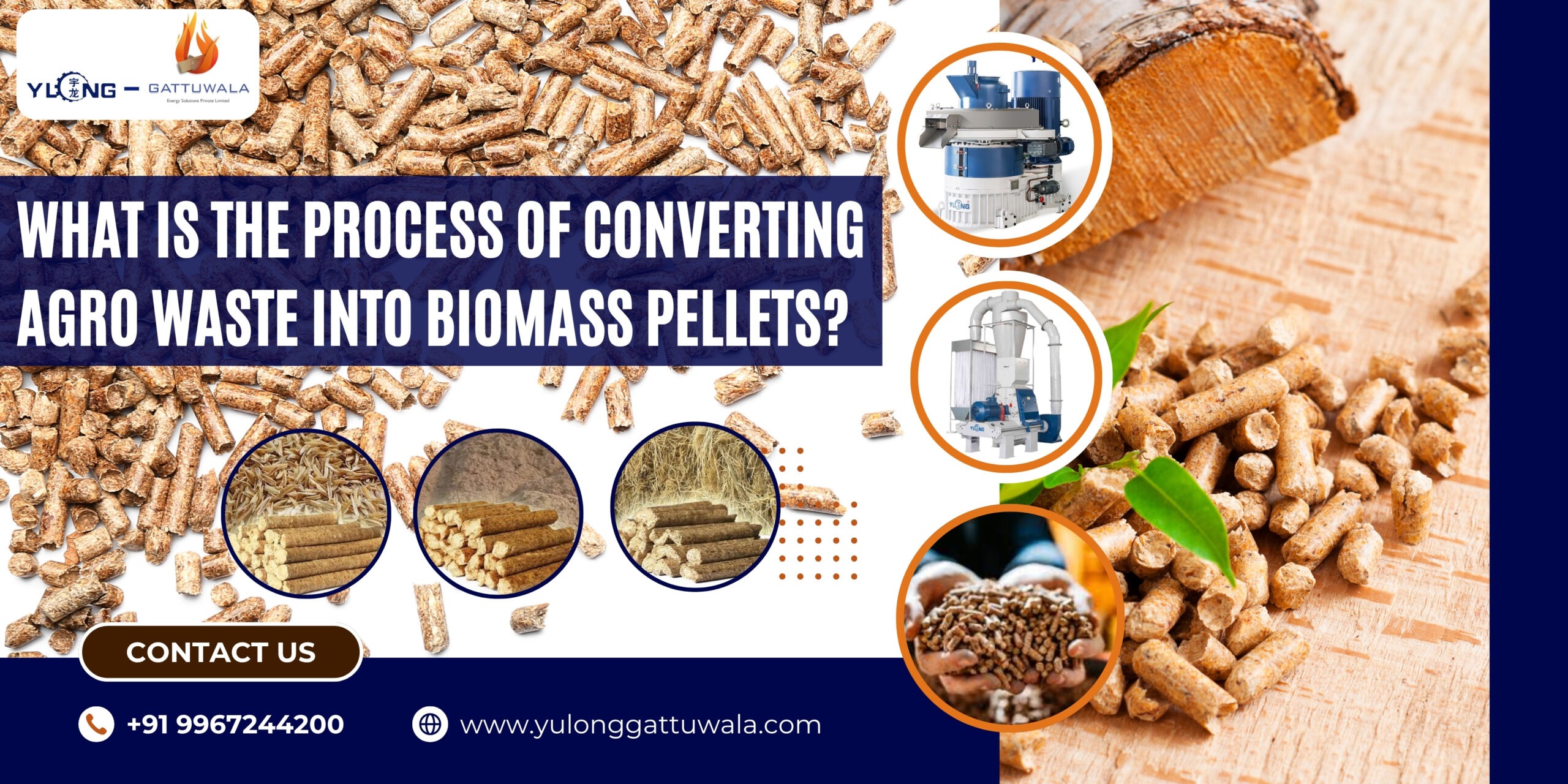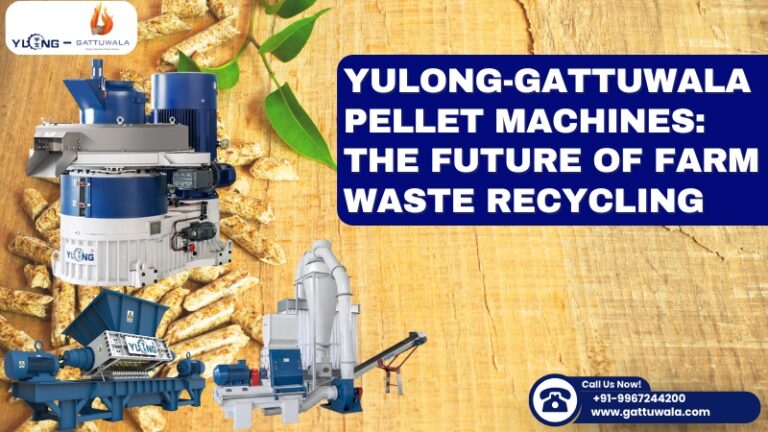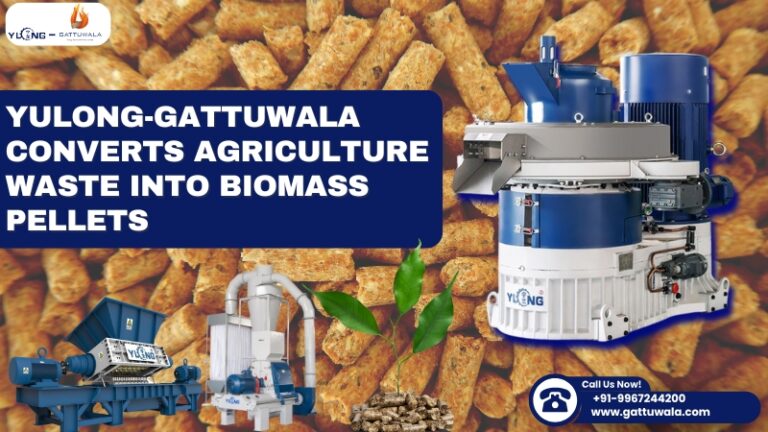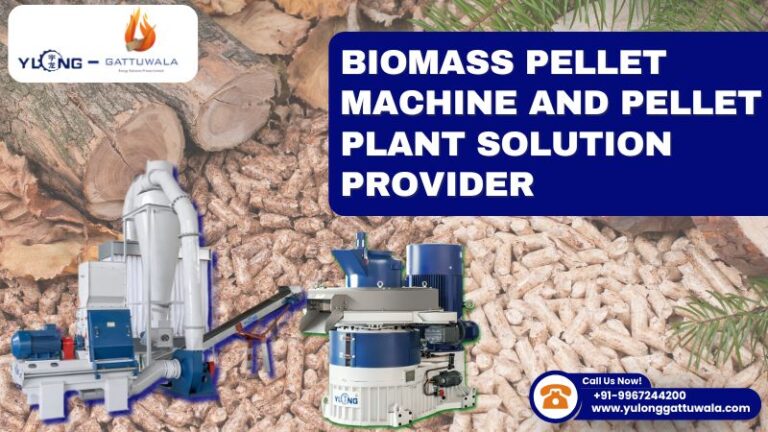- August 4, 2025

In today’s eco-conscious world, the shift toward renewable energy is more crucial than ever. One sustainable and promising method is converting agricultural (agro) waste into biomass pellets. These pellets not only reduce environmental pollution but also offer a cost-effective, clean-burning fuel alternative. This article explains the step-by-step process of transforming agro waste into biomass pellets and why this technology is gaining traction in India and globally.
✅ Why Convert Agro Waste to Biomass Pellets?
India produces over 500 million tonnes of agricultural waste every year. Traditionally, much of this waste—like wheat straw, paddy husk, cotton stalks, and sugarcane bagasse—is burned in fields, causing severe air pollution and soil degradation.
Biomass pellets offer a green solution:
• 🔥 Clean and efficient energy
• 🌱 Reduces carbon footprint
• 💰 Increases farmers’ income
• ♻️ Waste management made profitable
🏭 The Biomass Pellet Production Process
1. Collection and Transportation of Agro Waste
The first step is gathering agro waste from fields, mills, or agro-processing units. This includes:
• Paddy straw
• Wheat husk
• Groundnut shells
• Sugarcane trash
• Cotton stalks
Once collected, the material is transported to the biomass pellet production plant.
2. Collection and Transportation of Agro Waste
Fresh agro waste often contains high moisture levels (up to 40–50%). Moisture must be reduced to 10–15% to produce quality pellets.
Solution: Use of industrial flash dryers or rotary drum dryers to remove excess water and make the raw material ready for grinding.
3. Grinding or Crushing
Next, the dried material is passed through a hammer mill or crusher. The goal is to reduce the waste to a fine, uniform powder or chips to ensure consistent pellet size and density.
4. Mixing & Conditioning
Before pelletizing, binders (like starch or molasses) may be added to improve pellet strength. The material is conditioned with steam or heat to soften lignin—a natural binder in biomass—which improves the pellet formation process.
5. Pelletizing
This is the heart of the process. The conditioned material is fed into a biomass pellet machine. Inside the machine:
• Rollers press the material through die holes.
• High pressure and heat bind the particles.
• Cylindrical pellets (6mm–10mm diameter) emerge from the machine.
Leading manufacturers like Yulong-Gattuwala offer high-output, fully automatic pellet machines suited for Indian agricultural waste types.
6. Cooling the Pellets
Freshly made pellets are hot (90–100°C) and soft. A pellet cooler reduces the temperature and hardens the pellets for safe handling and storage.
7. Screening and Packaging
Freshly made pellets are hot (90–100°C) and soft. A pellet cooler reduces the temperature and hardens the pellets for safe handling and storage.
After cooling:
• Pellets are screened to remove fines or broken pieces.
• They are then bagged in 25kg, 50kg, or jumbo sacks for transport.
Ready-to-use pellets can be used in:
• Biomass boilers
• Power plants (co-firing)
• Industrial heating systems
• Domestic stoves
How Yulong-Gattuwala Machines Work
Yulong-Gattuwala machines are engineered to convert agricultural waste into biomass pellets using a streamlined process:
- Raw Material Collection: Crop residue like paddy straw, sugarcane bagasse, cotton stalks, or wood chips is collected.
- Grinding: Materials are shredded using hammer mills or crushers.
- Drying: Moisture is reduced using a flash dryer or rotary dryer for optimal pelletization.
- Pelletizing: The material is compressed into pellets using Yulong-Gattuwala pellet machines.
- Cooling & Packaging: Pellets are cooled and packed for storage or transport.
The result? Biofuel pellets that can be used for power plants, industrial boilers, domestic heating, or even exported.
Benefits of Yulong-Gattuwala Pellet Machines
- High Efficiency: Machines are designed to deliver consistent output with minimal maintenance.
- Robust Build Quality: Made to handle Indian conditions and multiple types of raw materials.
- Automation: Optional semi or fully automatic systems available.
- Energy Savings: Optimized to consume less power per tonne of pellets produced.
- Govt. Subsidy Support: Full assistance with NHB, MNRE, and other subsidies or tenders.
🌍 Market Demand in India
Government initiatives like NTPC’s biomass co-firing and policies promoting non-fossil fuel use have increased demand for biomass pellets in India. Biomass pellet plants are becoming popular in Punjab, Haryana, Maharashtra, and Uttar Pradesh.
🚜 Benefits to Farmers and Industries
• For farmers: Agro waste becomes an income source instead of a disposal problem.
• For industries: Pellet-based fuel is cleaner, cheaper, and supports CSR goals.
• For the environment: Less stubble burning, reduced pollution, and sustainable rural development.
🏆 Trusted Biomass Pellet Machine Manufacturers
Several companies provide complete biomass pellet solutions. Some trusted Indian and global brands include:
• Yulong-Gattuwala
• Kaps Engineers
• Ecostan
• Bharat Agro Engineering
Always choose a supplier with:
• Proven industry experience
• Government tender and subsidy support
• After-sales service and training
Converting agro waste into biomass pellets is a smart, sustainable move in 2025 and beyond. It helps reduce pollution, provides economic benefits to farmers, and supports green energy goals. With the right machinery and process setup, this solution can revolutionize how we view agricultural residues—turning waste into wealth.
Looking to start your biomass pellet business?
Explore pellet machines, plant setup services, and government support through top manufacturers like Yulong-Gattuwala India—your partner in green energy.
📞 Interested in setting up a biomass pellet plant in India? Contact Gattuwala Energy for expert consultation, equipment, and government subsidy support.




